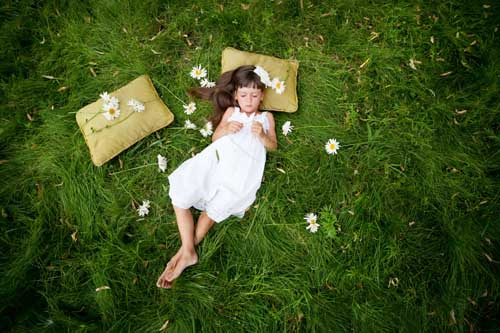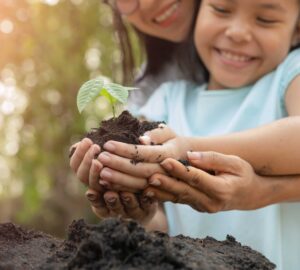
“Mindfulness is the basic human ability to be fully present, aware of where we are and what we’re doing, and not overly reactive or overwhelmed by what’s going on around us.” (mindful.org)
Being mindful and learning to focus on the present moment can help us in so many ways. Apart from reducing anxiety, improving our feelings of gratitude, and helping our mental focus, mindfulness can help our children deal with family, social and academic stress. If you have a toddler, or a classroom full of third graders or teenagers, here are a few ways to incorporate mindfulness into your routine.
- Teach children how to breathe fully. Teach them deep, diaphragmatic breathing – to lift the whole torso on the in-breath. This helps the body fully relax.
- Use mental anchors like counting breaths, or a simple mantra such as “breathe in and breathe out.” This helps them focus, or bring their attention back if their minds have wandered.
- Keep it simple and in the moment. Relate mindfulness to the senses. You can ask, “What do you hear? What do you smell?” Try just listening for five breaths, feeling what the body feels like for five breaths, etc.
- Introduce children to mindfulness in small steps. Don’t make a big deal of it. Some children may giggle or play around. Ignore it. With time and practice, they’ll begin to relax into the experience.
- Connect mindfulness to everyday life. Invite students to feel the brush and smell the toothpaste while they are brushing their teeth in the bathroom at home. While standing in line in the cafeteria, encourage them to smell what the cafeteria chefs have prepared, to listen to the sound of voices, to see the colors of everyone’s trays and lunch bags.
- Use mindfulness prompts. You might use a gentle bell for your students, or a little stone carried in the pocket as a reminder. Or you might use a verbal prompt that signals the mind to be present and to unwind.
Introducing children to mindfulness is simple and rewarding. Its benefits are immediate and build over time. Beginning this gentle routine when children are young, can help them manage the challenges of growing up and give them tools that last a lifetime.



